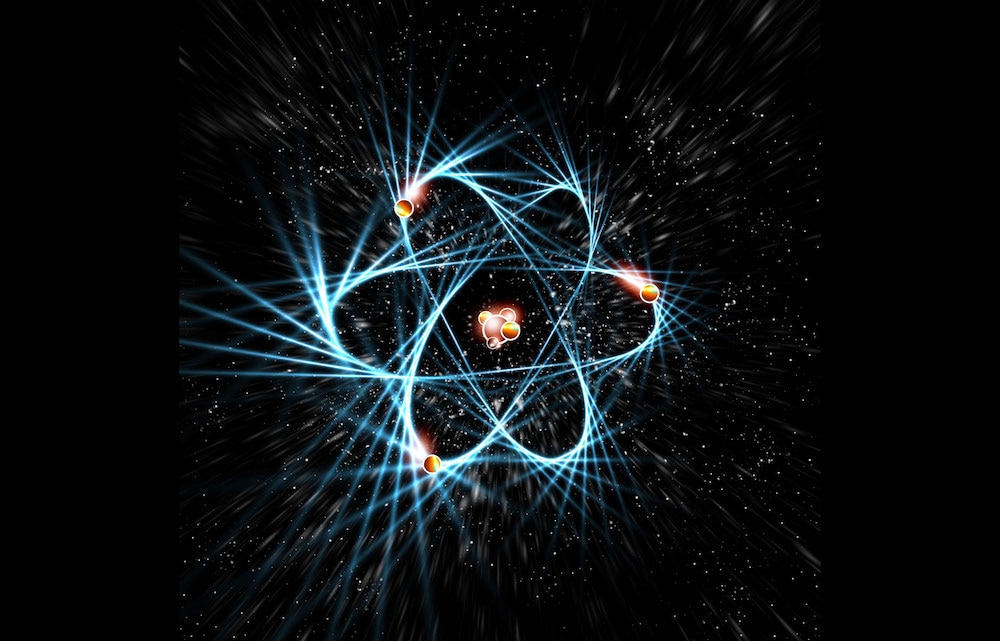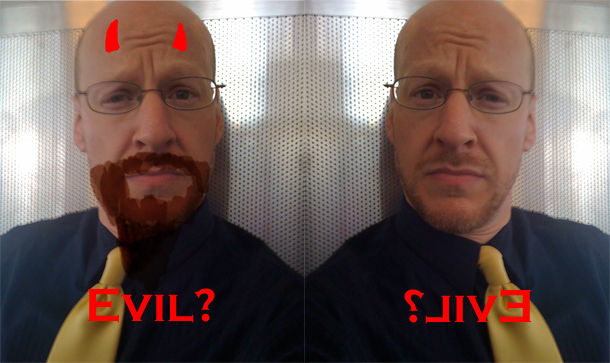Create a free profile to get unlimited access to exclusive videos, sweepstakes, and more!
Antimatter and matter fall at the same rate. Well, within 3%.
Antimatter is just like matter where it matters.

Let's say I'm a mad scientist*. I have a ball of antimatter and a ball of matter, which I have carefully measured out atom by atom to be exactly the same mass in my Matter-Antimatter Doomsday Device Maker. I then hold them both over the ground at exactly the same height, and then let them go.
Will they hit at the same time? Or is there some fundamental property of antimatter that makes it respond to gravity differently than normal matter?
The laws of physics say they hit at the same time. However, scientists like to test these laws to make sure nature enforces them diligently. Sometimes we find it doesn't, and out of such things new physics is made.
A new experiment to investigate the properties of antimatter has found that yes, they hit at the same time to within 3% (link to paper). That's pretty cool! Especially for an experiment that wasn't really designed to test that.
First, a little bit about antimatter. For the tl;dr crowd, antimatter is exactly like matter in every way except the charges on all the particles are opposite. So an antiproton has the same mass and spin as a proton but a negative electric charge, and an antielectron (called a positron) has the same mass and spin as an electron but a positive charge.
This means there isn't anything inherently weird or science fictiony about antimatter; it should behave in pretty much every way as matter does. However, there are a couple of twists. The first is that if you bring the matter and antimatter versions of a particle together they annihilate in a flash of energy. A lot of energy. This is the total conversion trope used in so many science fiction stories — if I met my antimatter equivalent we'd detonate with an explosive yield of 3,000 one-megaton nuclear weapons. So, yikes.
The other twist is that the Universe is dominated by matter and not antimatter. Antimatter is out there, created naturally in a host of different processes like radioactive decay and in the cores of massive stars, but in minuscule amounts compared to matter. According to current theory it should've been created in exactly equal amounts moments after the Universe itself came into existence, but if that were true there'd be no matter or antimatter at all; all those particles would've annihilated each other, and the Universe would be just energy.
Happily, given our existence depends on this asymmetry, that didn't happen. But why?
Scientists study antimatter to try to figure out what makes it different than normal matter. A recent experiment showed that there is in fact a difference between them — it's a little esoteric, but I did my best to explain it. But other experiments show that in many ways they do behave exactly the same, like how antimatter atoms emit light in the same way as normal matter atoms do, and that antimatter particles create wave interference patterns the same way, too.
A fundamental property of matter particles like electrons and protons is the ratio of their mass to their electric charge. According to the laws of physics as we understand them, this should be the same everywhere and over all time. The ratio should also be the same for antimatter particles as for matter particles.
But is it really? That's where the new experiment comes in. Charged particles spin around the magnetic field lines at a characteristic rate called the cyclotron frequency, which depends on their charge and their mass, and this frequency can be measured to very, very great precision. So the scientists used a fancy lab setup to trap antiprotons in a magnetic field and measure the frequency. They can't do this for a proton because their setup only allows for it to be done with negative charges, so they used a negatively charged hydrogen atom — one with two electrons — as a proxy, making sure to compensate for the extra mass of the two electrons in the atom.
What they found is that the antiproton and proton have the same charge to mass ratio as each other to within 0.0000000003%! And that's with a precision of 16 parts per trillion, so yeah, pretty accurate.
That's reassuring. At least in this way antimatter acts like matter.
But they also realized they could test another property of antimatter: How it reacts to gravity. This part is actually astronomy-based: They ran their experiment at two different times of the year, when the Earth was at different distances from the Sun on its elliptical orbit. That means the gravity of the Sun was a teeny bit different at those two times, and that should affect the cyclotron frequency, causing it to oscillate. They found that the antimatter and matter oscillated by the same rate to an accuracy of 97%. In other words, if gravity affects antimatter differently than matter, it does so by less than a 3% difference. This is a better measurement of this property than has ever been made before! Gravity is a very weak force and subatomic particles have very little mass — they're small — making this a tough measurement to make. So that's pretty cool.
This means my Doomsday Ball will fall at the same rate as the normal matter ball, at least to 97%.
But.
Does the antimatter ball fall down, or would it fall up? According to standard models of particles it should be affected by gravity in the same sense as matter, pulling it down. But there's an idea that antimatter might react in the opposite manner as matter, and as we've found over time our hypotheses aren't always right. So it's nice to test even these basic assumptions out. Unfortunately, this experiment doesn't distinguish between up and down in that way, so we'll have to wait for other experiments to see if we can make antigravity antimatter devices.
Probably all for the best anyway. Falling up would be fun, but detonating in an immense explosion that rivals the impact of the dinosaur killer asteroid may be a bad idea.
There's a lot we still don't understand about the Universe, like, say, why we're here instead of having a Universe that's just a soup of energy. Experiments like this one will help us figure that out. I like soup, and I like energy, but I do prefer the Universe the way it is.
*This statement is not to be construed as an admission of either guilt or innocence.



























